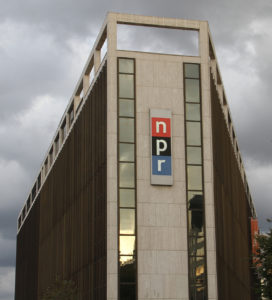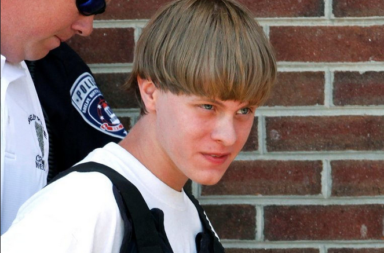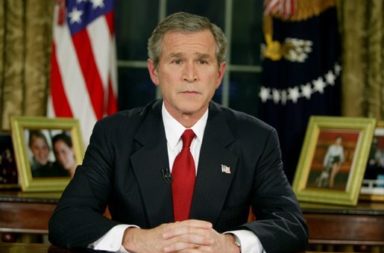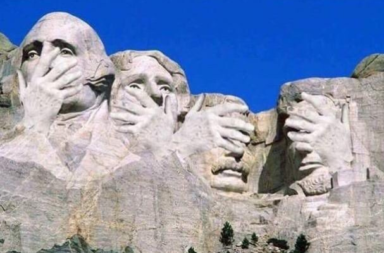When the Trump administration released its proposed budget in March, it suggested eliminating federal funding for the Corporation of Public Broadcasting (CPB). “Can we really continue to ask a coal miner in West Virginia or a single mom in Detroit to pay for these programs?” Trump’s Office of Management and Budget director, Mick Mulvaney, said in defense of the cuts.
- The 1967 Public Broadcasting Act was intended to promote diversity of opinion, but now its doing the opposite.
- Without federal funding, bias is able to creep in much more easily.
Mulvaney seemed to argue that public media was a luxury for the educated few, rather than a truly public resource. Indeed, since the CPB was first established, the degree to which public media reflects the diversity of the nation has the subject of much debate.
But it’s not as simple as Mulvaney makes it out to be. Though the proposed cuts seem unlikely to go through this year, public media will continue to be at the mercy of political and economic factors that have hampered its ability to fulfil its mission and achieve its goals.
A mirror for the nation
When Congress passed the Public Broadcasting Act of 1967 to establish a national, publicly funded media system, there were two clear mandates: to cultivate a more engaged citizen and to affirm the nation’s diversity.
In the network’s original mission statement, NPR architect Bill Siemering described public media as a “necessity for citizens in a democratic society to be enlightened participants.” Unbeholden to the demands of the marketplace, public media would ideally be able to reach audiences that might not be targeted by commercial broadcast networks and their advertisers. This included communities traditionally left out of civic discourse: the uneducated, the poor, the housebound, ethnic minorities and those living in rural areas.
“We try to mirror ALL of the country – perhaps the hardest thing of all,” NPR’s former deputy director Rick Lewis said in 1970, describing his vision for “Morning Edition.”
To tackle this challenge, the CPB decided its subsidiaries, National Public Radio (NPR) and the Public Broadcasting Service (PBS), would have a national reach. Meanwhile, they would cultivate member stations rooted in a diverse range of communities across the country. NPR affiliates based in Fresno, California; Mobile, Alabama; or Erie, Pennsylvania might all carry national programs, but they are also tasked with pursuing local stories.
A precarious funding model
Nonetheless, speaking to the country’s extraordinarily diverse populations through a single media system has proven tricky. And over the years, public media has ended up tailoring its programs to an almost exclusively upscale audience of baby boomers.
The decision to focus on college-educated listeners and viewers is certainly a function of the CPB’s own economic realities. As communications professor Robert McChensney argued in his book “The Political Economy of Media,” American public media has been severely handicapped since its inception.
Unlike the British Broadcasting Corporation (BBC) – which citizens subsidize by paying an annual television license fee – American public media receives relatively little federal funding, denying it a stable source of income. With federal funding in a constant state of flux, public media has come to rely on income from private sources such as pledge drives and corporate underwriting accounts. For example, in 2015 NPR member stations received about 14 percent of their revenues from federal, state and local entities, while 20 percent came from corporations and 37 percent from private donations.
To be economically viable, therefore, public media must focus on affluent, educated listeners. The result is a media system that can, at times, seem woefully out of the touch with nation it purports to represent.
Just as the country is becoming more ethnically, religiously and linguistically diverse (a recent Pew study showed that the U.S. electorate in 2016 was the most diverse in the nation’s history), consumers of national public media remain disproportionately white.
According to a 2012 report, the audience for NPR’s member station news programs was 5 percent African-American, 6 percent Latino and 5 percent Asian-American. This disparity is also reflected at the leadership level. In an essay, Joseph Tovares, the senior vice president and chief content officer for the CPB, admitted that the inclusion of African-Americans, Latinos, Asian Americans and Native Americans at the general manager level are almost nonexistent at NPR and PBS member stations.
We see these disparities in the programming itself. Like other national media institutions, public media has traditionally struggled to find a way to include the voices of ethnic and racial minorities. While there are some bright spots – including PBS’s children’s programming and NPR’s Latino USA, the overall diversity efforts seem tepid. In a forum organized by NPR to address public radio’s diversity challenges, sociologist Michael Schudson effectively captured the dilemma:
“No doubt the staff makes an effort to cover issues of special importance to minorities and women, but you suspect that it is a mission and not a habit, and that it feels like a kind of foreign correspondence. You know it can be done well or poorly but, in either case, it is done with the handicap of a largely monochromatic newsroom.”
A wavering commitment to diversity?
Public media realizes that the status quo is a losing strategy. The demographic realities are too sobering. NPR projects that by 2020, its stations’ audience of people younger than 45 will be around 30 percent – half of what that audience accounted for in 1985.
To its credit, the CPB has made broadening its appeal a core part of its current strategy, which includes what it calls the “three D’s”: digital, diversity and dialogue.
 However, their own strategic documents provide some insight into just how elastic their definition of inclusion is. For example, NPR’s target audiences still include the “Affluent Business Leader” who is “a c-level employee, has an investment portfolio of $150,000 or more, and holds a leadership position in a club or organization.” Then there’s the “Cultural Connoisseur” who has a postgraduate degree, is more likely to buy tickets for classical music, ballet and opera, and takes more than three vacations a year. For its part, PBS touts the “Power Mom,” who enjoys outdoor activities and spends a significant amount of time online searching for information on museums and concerts.
However, their own strategic documents provide some insight into just how elastic their definition of inclusion is. For example, NPR’s target audiences still include the “Affluent Business Leader” who is “a c-level employee, has an investment portfolio of $150,000 or more, and holds a leadership position in a club or organization.” Then there’s the “Cultural Connoisseur” who has a postgraduate degree, is more likely to buy tickets for classical music, ballet and opera, and takes more than three vacations a year. For its part, PBS touts the “Power Mom,” who enjoys outdoor activities and spends a significant amount of time online searching for information on museums and concerts.
In other words, these are not the disenfranchised communities whom the original architects of NPR believed would be served by public media.
As journalism professor Ralph Engelman writes in his book “Public Radio and Television in America,” today’s public media was born out of the desire to achieve a more democratic version of German philosopher Jürgen Habermas’ public sphere. Habermas’ notion of what “public” means was criticized as being reserved for propertied, educated males at the exclusion of the poor and disenfranchised. But by serving those already inclined to participate in civic life, it appears that today’s public media extends – rather than disrupts – this pattern.
Just as we’re witnessing unprecedented attacks on the country’s most disenfranchised communities, this seems like an institutional failure. Legislators are advancing policies designed to restrict the movements of Latinos and Muslims. Gains made by the LGBTQ community are being scaled back. There are active efforts to dismantle the Affordable Care Act, eliminate entitlement programs and defund early education programs like Head Start, all of which undermine working-class communities.
Now more than ever, it seems necessary to include the voices – and reach the people – most impacted by these policies. It seems that only by unhitching its funding model from private interests can public media truly fulfill its mission of serving the public at large. But this would require a federal government that’s willing to boost – rather than slash – its funds.




